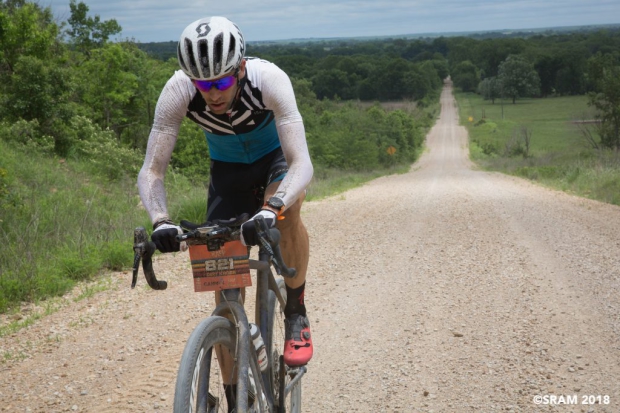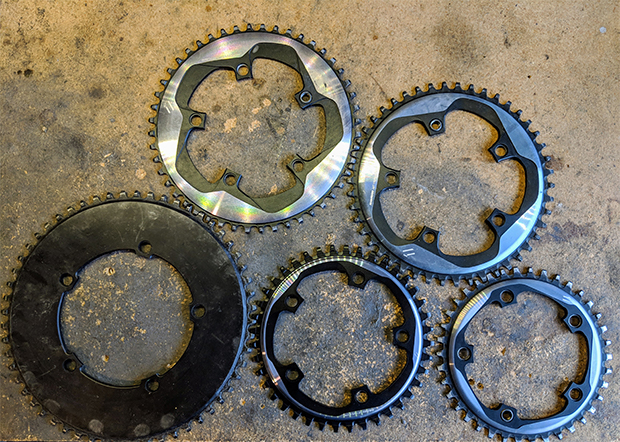650B Is Fun. Does That Matter?
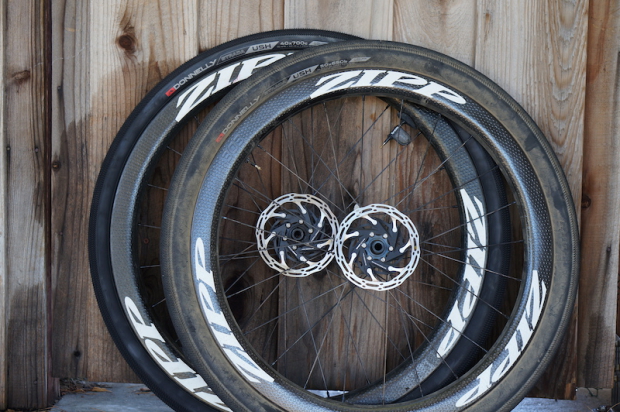
I set out to do a comparison of 700C vs 650B wheels and tires in a "controlled" way. My goal was to use the same tire model in a roughly equivalent overall size – such that the circumference of the tire was similar – with the idea of determining which setup was faster. Up to this point, I'd done all of my gravel riding on 700C x 38-40mm tires. During my first ride on 650B x 50mm tires, I quickly realized the flaws in this approach. While the route that I aimed to "test" on is sufficiently varied – it's about 1/3 paved road, 1/3 fireroad, and 1/3 proper trail (with plenty of single-track options), it was pretty clear that each setup would excel in different areas. While I knew that part somewhat intuitively, what I didn't expect was how the smaller wheels – and larger tires – would affect my experience of riding.
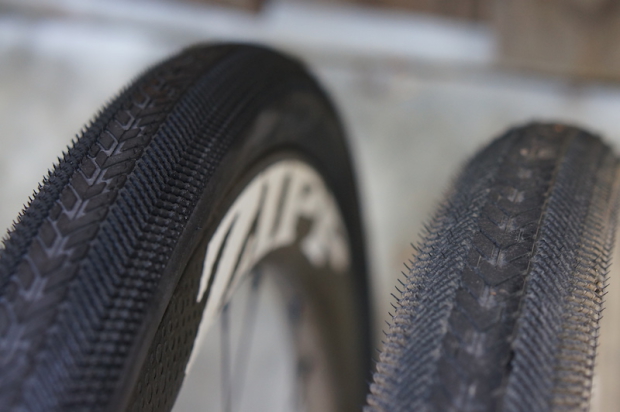
By temperament, I'm fairly analytical. Often to a fault. But I actually do ride my bike largely because I enjoy it. And not just because of the immense treasure trove of analyzable data it generates. Like, I actually like to ride a bike solely for the sake of riding a bike. I was not always convinced of this when I was a professional athlete, especially when training wasn't going well. And I still do forget it from time to time. But the overarching takeaway from my first ride on 650Bs was… "This is fun!" Especially on the dirt.
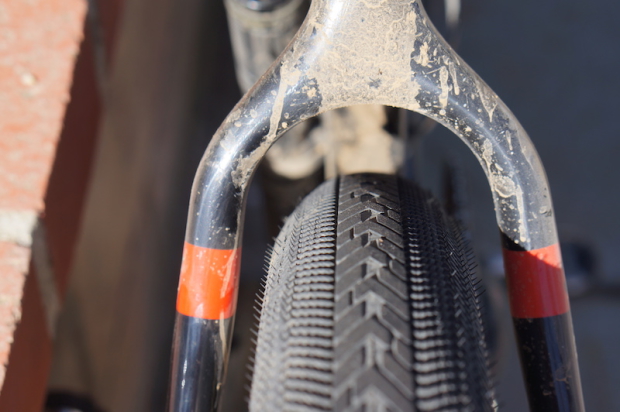
The Donnelly Strada USH has a low profile tread, but in 50mm width and at 27psi, it's got a substantial footprint that gave it better grip that expected. But what a tire that size – and at that pressure – really offers is suspension. A lot of it. The 650B was faster than I expected on the rough stuff because I could keep power on the pedals. But more than just being fast, it was fun, because I could just roll over things. I had a similar experience getting on a full-suspension 29'er for the first time. As a not super-competent technical rider, the bike made up for a lot of my flaws. And the same can be said of the 650B setup. While I like to think I'm a better technical rider than I was, a fully rigid (or even mostly rigid) gravel bike can present some challenges when you skew more towards the drop-bar-mountain-bike end of the spectrum. Technical skill helps – a lot – but it still can't totally smooth out rough trails. But big fat tires can.
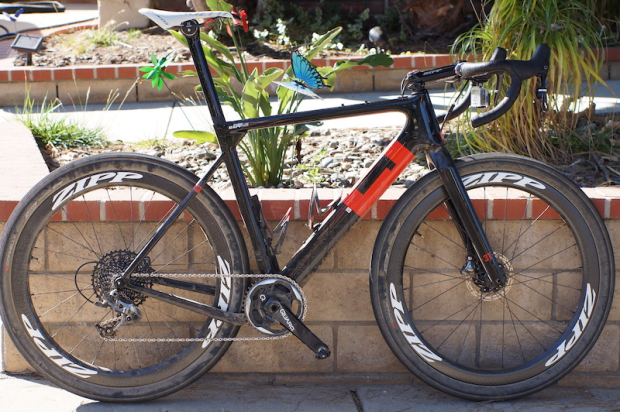
My comparison tire was the Donnelly Strada USH. In 650B, I rode it in a 50mm width. And in 700C, a 40mm width. Both were setup tubeless on Zipp 303s. Donnelly offers some additional sizes for both – 650B in 42mm and 700C in 32mm – but the fatter tires, especially on the 650B side, seemed more relevant. I was worried that with so much time on 700C x 40mm, that a 650B x 42 mm would seem undersized and would skew my opinion. In comparison with tires from their X'Plor series, the Strada tires are a bit more road-biased. All of Donnelly's tires have a three-letter code taken from an airport that they feel is relevant to the tire's intended purpose. From Donnelly's website, "The USH is named for the airport code of Ushuaia on the island of Tierra del Fuego, Argentina. Ushuaia is the southernmost city in the world, and the ultimate destination for adventure bike touring." I love this type of storytelling and while there's certainly no practical benefit to this naming schema over something invented, I think it's a nice touch. "Gravel" – I also like Donnelly's use of the term "adventure" instead – is really about where you ride, and the various airport codes show some appreciation and care in that regard.
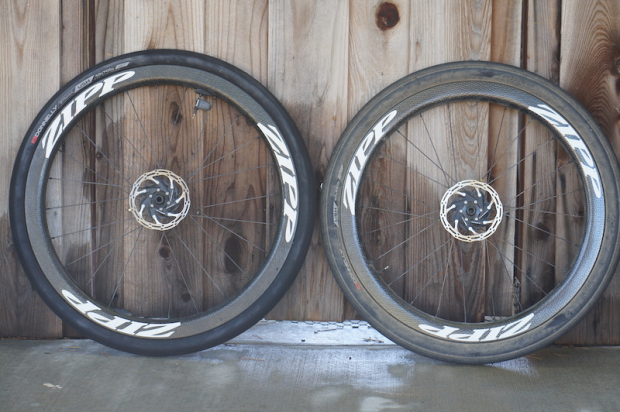
Donnelly is a somewhat new name, but it's an older company. Starting in 2010, Donn Kellogg licensed the Clement name from Pirelli, and revived the historic tire brand. With Pirelli moving back into the bike tire game, Kellogg ended his licensing agreement and launched the Donnelly brand, rebranding his existing Clement tires as Donnelly. So this is a company with experience in the gravel/adventure/all-road or whatever-it-is-we're-calling-it-today space.They were kind enough to provide the two sets of tires to support this article.
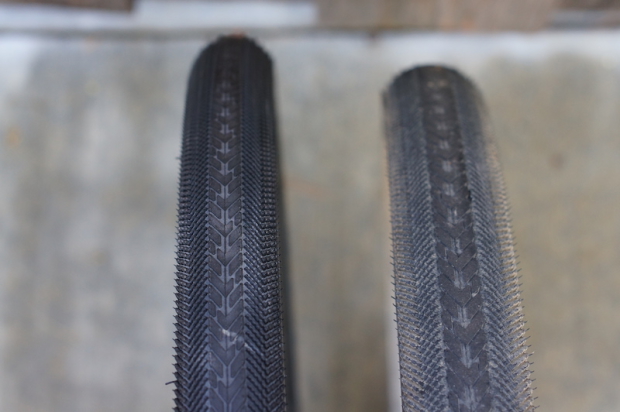
The tires are fairly stout, which is neither good nor bad. I'd say based both from riding them on the road and on my rollers (they're noisy, though not insanely so, and pretty smooth) that they are not the lowest Crr tires around. But they are fairly bulletproof. They mounted up easily on Zipp 303s and held air well without sealant, though I did of course seal them up with some Stan's Race sealant (about 60cc in each). On the road, they are smooth enough that it's enjoyable to ride them (no unwanted vibration from knobs), though I wouldn't say that they are "fast," though I also didn't think they were "slow." Off-road, they are more capable, and their durability means – on certain terrain (especially when gravity is on your side) – that they go quickly, especially if/when you have the confidence to just let them roll over things and hold a straight line.
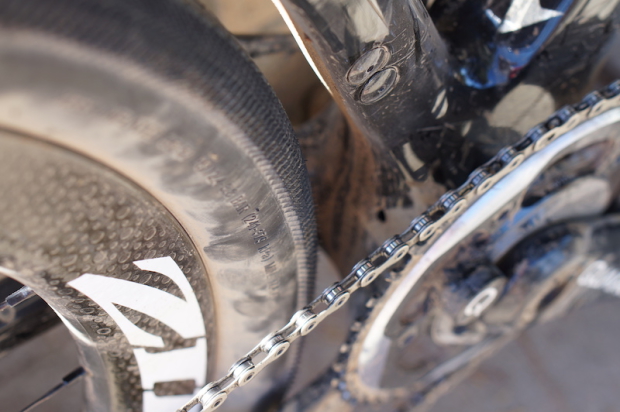
As compared with the Compass (now Rene Herse) Snoqualmie Pass (a 700C x 44mm slick) that's super fast rolling (with a Crr as measured by our own Tom Anhalt as being roughly equivalent to a GP4000S), they are obviously designed with a greater focus on durability. But I also found that they have stood up to abusive riding more than those tires (which are based around a Panaracer casing) did. After bunch of rides where I intentionally – and increasingly – just rode them over things, they still look brand new. To that end, I do seem them more as "adventuring" tires rather than "gravel racing" tires, though you can lose an awful lot of time changing flats or pumping tires once the sealant has done its job… But I definitely feel that these were tires that weren't designed with the idea of a SAG vehicle in mind. Imagine, say, during a long ride on an island that's probably closer to Antartica than it is to your local bike shop… On the 700C side, they are less unique. There are a fair number of "similar" tires. But I do think that the 650B x 50mm road-focused option is special. While this space is certainly exploding, this is the biggest mostly-slick tire I've seen in 650B. Panaracer has just recently introduced a version of the Gravel King (not the more treaded Gravel King SK) in 650B x 48mm, perhaps in response to a growing demand for big-footprint-smooth(ish)-tread 650B tires.
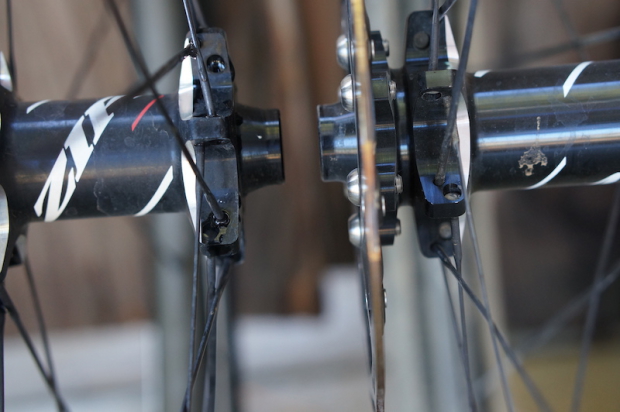
Ultimately, I ended up chucking my idea of a quantitative head-to-head match up between 700C and 650B. To me, it's a bit like the tubular vs clincher debate. Or the disc brake vs rim brake debate. There are advantages to each setup, but the most significant advantages are the least technical ones. I like clinchers because you don't worry about flatting on a pre-race reconnaissance ride. But I like tubulars because they are easier to ride flat – or at low pressure – if you do puncture. I like disc brakes because they give me more confidence, especially in bad weather. I like rim brakes because caliper/rotor alignment is less forgiving of wheels swaps and manufacturing variance. I like 650B on a gravel bike because I can just kind of plow through stuff. I like 700C because I think there are better tire choices for all-around riding.
And that last is probably the biggest knock against 650B. As with disc brakes, 650B is an expensive addition. For many (most?) people, it's another set of wheels. Another set of tires. Another set of rotors. One of the great parts of gravel is that it can reduce the cost of being a bike rider. You don't need a mountain bike and road bike; you can just get a gravel bike and with only one bike, you have more – and truly different – options about where to ride. Bikes are expensive. And I don't perceive that 650B is quite as universal as 700C. If you want to go on a fast paced group ride, skinny tires on 700C wheels are what you want. Are fast-rolling 650Bs an option? Yes. But the Crr penalty on the road is going to add up, especially for a more casual rider. And the "limitations" of a 700C wheel with good trail tires off-road are pretty minimal (to non-existent). There was nothing I could ride on 650B that I couldn't ride on the 700Cs. It was just more fun to bash around on the balloon tires. Is that a compelling enough reason to shell out for a complete second wheelset? I guess that depends on your priorities. But when thinking about wheels and tires, don't forget to factor in the coefficient of fun along with the coefficient of drag, rolling resistance, and everything else technical…
Dan Empfield disagrees with me about 650B wheels being "extra" wheels. He sees us moving towards a single wheel size for all sports – road, gravel, and tri. And the 650B solves a lot of fit problems – just like 650C did – for smaller riders but is enough bigger than 650C that it's a bit more universal. I have no idea if he's right – and if 650B will, because of gravel's increasing importance – become the new single wheel size, but I'm also not one to bet against Dan's vision for the future. I will say that I think 650B can be that wheel size, but it needs more tire offerings. No wheel size can be fast if there are not the tires to support it. But the improved fit options that were lost in the smallest sizes when 650C was abandoned could all be almost entirely reclaimed if 650B became a standard road size as well as a standard off-road size. While 650B is currently an extra set of wheels, it certainly is possible it could become the single wheel size for all disciplines.


